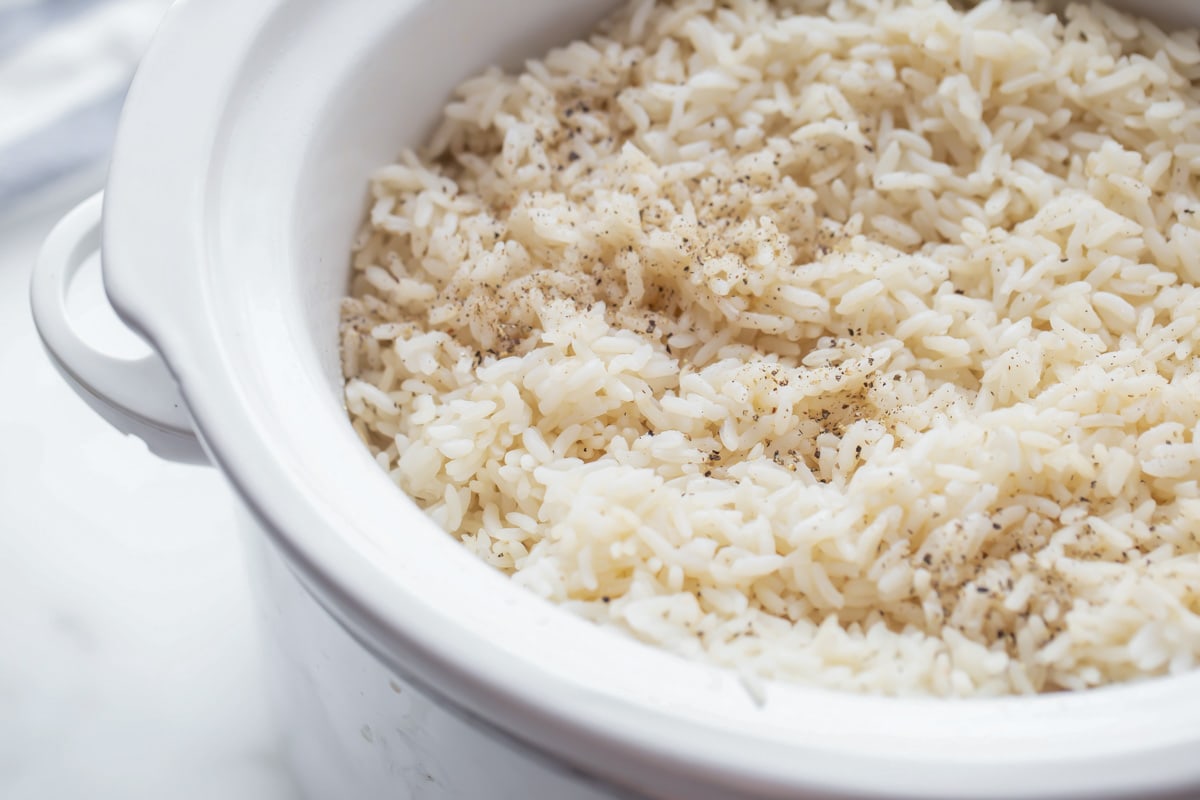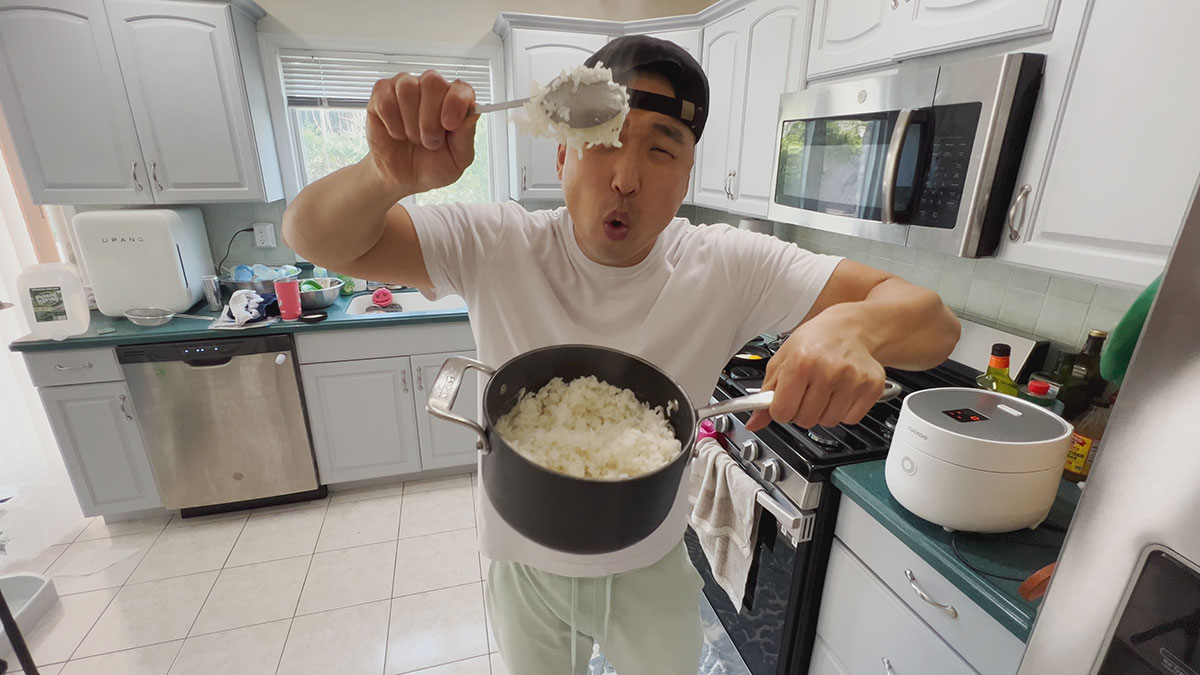Mastering the Art: How to Cook Bigas Mais in a Rice Cooker
Written By James Morgan
Welcome to the ultimate guide on how to cook Bigas Mais in a rice cooker. Bigas Mais, a unique and delicious Filipino dish made from corn rice, is loved for its texture and flavor. Cooking this traditional delicacy using modern appliances like a rice cooker simplifies the process and ensures perfect results every time. Whether you're a novice in the kitchen or an experienced cook, this detailed recipe will help you create a mouth-watering Bigas Mais just like your grandmother used to make.

The Legacy of Bigas Mais
Bigas Mais is more than just food; it's a piece of Filipino heritage. Made from cracked mature corn grains, Bigas Mais has been a staple in many Filipino households for generations. It's usually served as a substitute for regular rice and is cherished for its unique, slightly chewy texture and subtly sweet flavor. Understanding the roots of this dish adds a layer of appreciation for its simple yet profound cultural significance.

Why Use a Rice Cooker?
A rice cooker is an indispensable tool in modern kitchens. Designed to cook rice and grains to perfection, it simplifies the process by automating cooking times and temperatures. When learning how to cook Bigas Mais in a rice cooker, you'll appreciate its convenience and consistency. Using a rice cooker not only saves time but also ensures that your Bigas Mais is cooked evenly and thoroughly, preserving its delightful texture. For an example of how automated rice cookers can make a big difference, check out this latest review.

Ingredients
- 1 cup Bigas Mais (cracked corn)
- 2 cups water
- 1 cup coconut milk
- 1/2 cup sugar (optional for sweetness)
- A pinch of salt

Step-by-Step Guide
Preparation
Before you start, ensure you have all your ingredients laid out and your rice cooker ready. Having a quality knife set and cutting board like this one can make the preparation process smoother and more efficient.
Washing the Bigas Mais
Begin by thoroughly washing the Bigas Mais. Rinse the cracked corn under cold running water using a fine mesh strainer. This step is crucial to remove any dust or debris and to ensure a cleaner taste. Rinse until the water runs clear, which typically takes about 2-3 washes. Cleaned Bigas Mais will cook more evenly and taste better.
Soaking the Bigas Mais
Soaking the Bigas Mais before cooking helps to soften the grains and reduce cooking time. Place the rinsed Bigas Mais in a bowl and cover it with water. Let it soak for at least 30 minutes; overnight soaking can yield even better results. The longer soaking time promotes a more tender and fluffy texture.
Cooking in the Rice Cooker
Once soaked, drain the Bigas Mais and transfer it into your rice cooker. Add 2 cups of water and 1 cup of coconut milk to the cooker. Coconut milk not only enhances the flavor but also adds a creamy texture to the dish. If you prefer a sweeter dish, stir in 1/2 cup of sugar. Don't forget to add a pinch of salt to balance the flavors. Set your rice cooker to the regular rice cooking setting. Depending on the model, this process can take anywhere from 25 to 45 minutes.
Tips for Perfect Bigas Mais
Monitor the Water Level
Bigas Mais can be finicky when it comes to water absorption. During the cooking process, check the water level in your rice cooker occasionally. You may need to add more water if the grains seem too dry or if the cookers water has evaporated too quickly. Avoid opening the lid frequently as it can disrupt the cooking process and release steam.
Fluffing the Grains
Once the rice cooker indicates that the Bigas Mais is done, let it sit for about 5 minutes to allow the steam to finish the cooking process. Use a rice paddle or a fork to gently fluff the grains. This step is important to separate the grains and to achieve that perfect fluffy texture typical of well-cooked Bigas Mais.
Adding Extra Ingredients
Bigas Mais can be a versatile dish. You can customize it by adding various ingredients to enhance the flavor. Consider mixing in some sauted garlic, onions, or even shrimp to give it a savory twist, similar to how we prepare dishes in shrimp recipes. For those with a sweet tooth, topping it off with ripe mango slices, grated coconut, or a drizzle of honey can elevate the dish to a delightful dessert.
Serving Suggestions
Bigas Mais is typically served as a side dish, but it can also stand alone as a hearty meal, especially when enriched with additional ingredients. Serve it hot with your favorite viands, grilled meats, or fish to complete a satisfying Filipino meal. For a more colorful and nutritious option, serve it with a salad and some fruit on the side. If you're curious about other grilling recipes, check out our guide on venison steak.
Storing and Reheating
If you have leftovers, store them in an airtight container in the refrigerator. Bigas Mais can stay fresh for up to 3 days when stored properly. When you're ready to eat it again, you can reheat it in the microwave or on the stovetop. Just add a little water or coconut milk to bring back its moisture and prevent it from drying out during reheating.
Conclusion
Learning how to cook Bigas Mais in a rice cooker not only connects you with Filipino heritage but also offers a delightful culinary experience. It's an easy and convenient way to enjoy a traditional dish with modern-day comforts. Whether you're making it for yourself or for a family gathering, the richness and warmth of Bigas Mais are sure to be a hit. Don't forget to clean your cookware with proper cookware cleaner and take care of your cutting board with quality cutting board oil. Also, if you're interested in learning about different cooking methods, you might enjoy our guides on shrimp grilling.
As an Amazon Associate, I earn from qualifying purchases.



